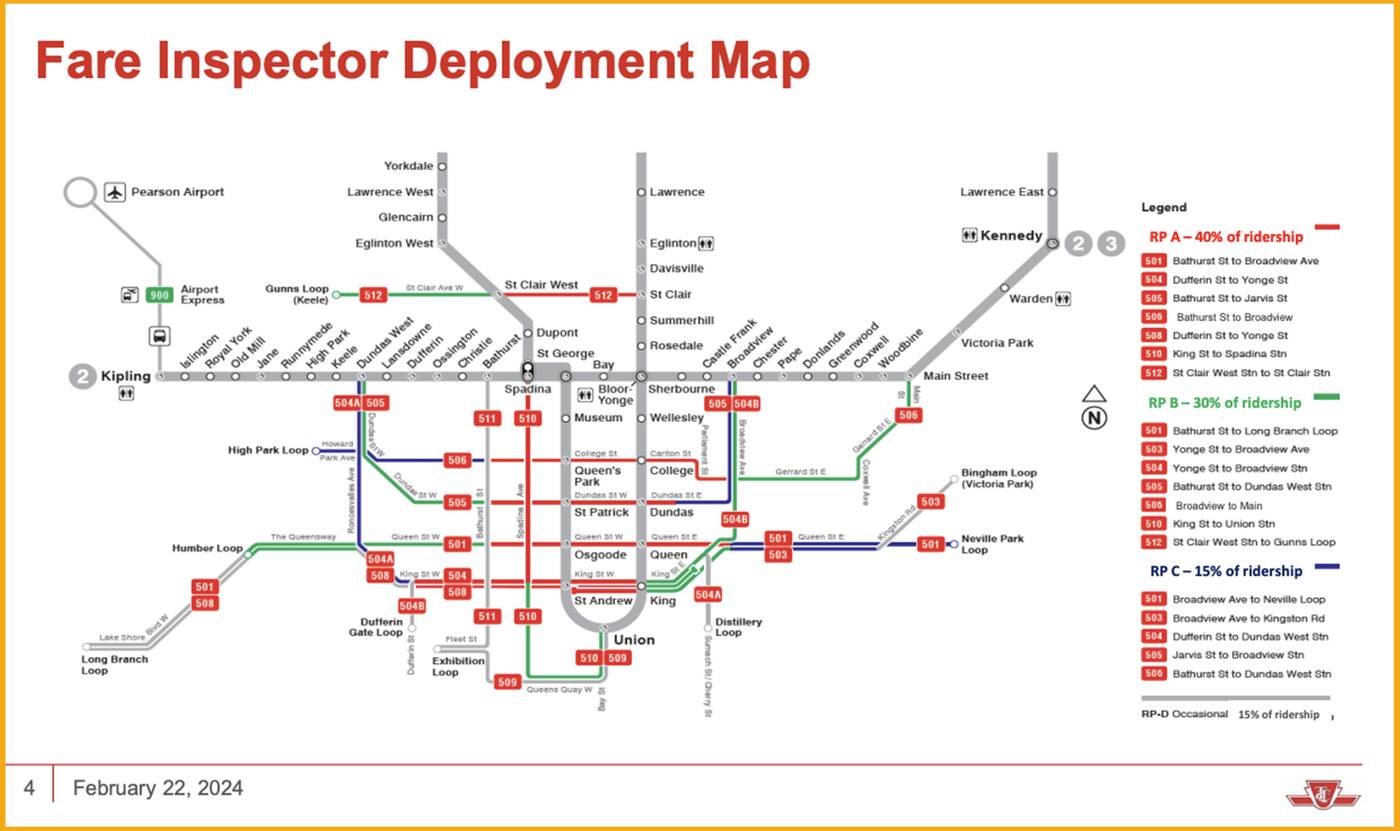
Here's where you're most likely to run into fare inspectors on the TTC
Though TTC riders shouldn't have to worry about fare inspectors given that everyone should be paying their way, some may wonder about the transit agency's strategy for enforcement, and whether more officers are dispatched at certain times or on certain routes.
A document from a recent meeting of the TTC Board shares some changes that are on the way for the network as far as fare compliance goes, including where the commission intends to focus its efforts most.
The update includes a map showing priority lines, which are the busiest in the city and thus will be the biggest target for inspectors. These include portions of the 501 Queen, 504 King, 505 Dundas and 506 Carlton Streetcars.
Commuters riding the 501 between Bathurst and Broadview, the 504 between Dufferin and Yonge, the 505 between Bathurst and Jarvis, and the 506 between Bathurst and Broadview may spot officers more often than passengers on other parts of these lines or on other routes.
Similarly, the 508 Lake Shore from Dufferin to Yonge, the 510 Spadina from King to Spadina Station and the 512 St. Clair from St. Clair West Station to St. Clair Station have been flagged for the strongest coverage by staff.

A TTC Fare Compliance Update from late February shows areas of the city that are prime concern for potential fare evasion, and where the most inspectors will be stationed.
Inspectors will also be concentrated on the 501 from Bathurst to Long Branch, the 503 Kingston and the 504 from Yonge to Broadview, the 505 from Bathurst to Dundas West Station, the 506 from Broadview to Main, the 510 from King to Union, and the 512 from St. Clair West Station to Gunns, though to a lesser degree than the above route segments.
They will also patrol some lower-priority areas, though again to a lesser extent: the 501 from Broadview to Neville Loop, the 503 from Broadview to Kingston Road, the 504 from Dufferin to Dundas West Station, the 505 from Jarvis to Broadview Station and the 506 from Bathurst to Dundas West Station have been identified as tertiary concerns.
The TTC says in this latest report that it will continue using ridership and fare gate data to strategically allocate resources, adding that it is now 100 per cent staffed for inspectors.
It also outlined increasing inspection times, maximizing coverage during peak periods, and also maximizing coverage in high-demand locations as key goals starting in March. The use of new technologies like automated reporting will also help meet its overall aim to to improve operational efficiency in this area.
Sergii Figurnyi/Shutterstock
Latest Videos
Latest Videos
Join the conversation Load comments







